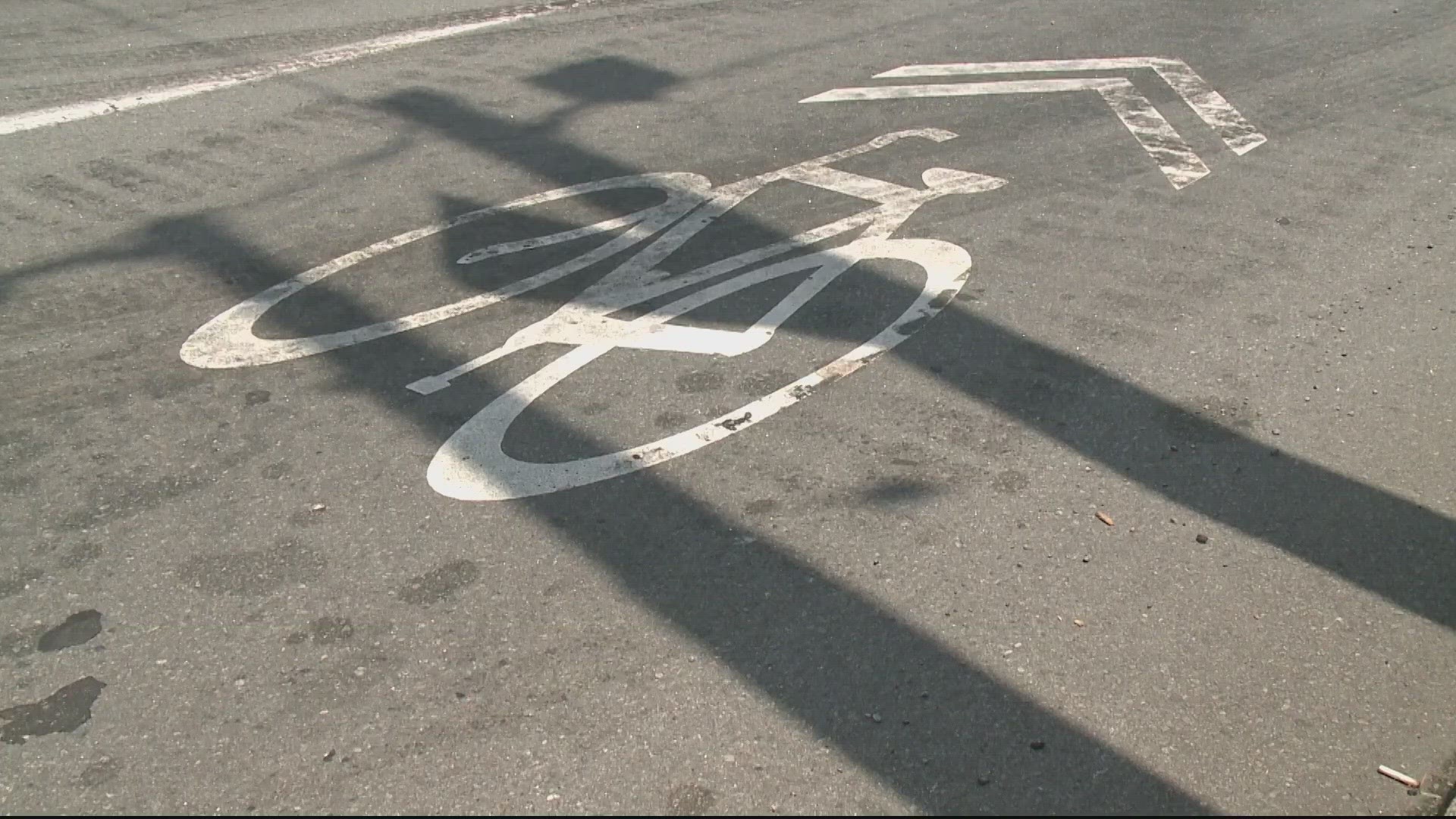WASHINGTON — May is National Bike Safety Month, this week is Bike to Work Week, and Friday is Bike to Work Day.
Swapping a car for a bike for the daily commute could come with some benefits. Exercise is good for one's health, and spending less time in the car helps reduce air pollution. Still, most Americans continue to commute by car.
Why?
One reason may be that they do not want to get run over.
According to the National Highway Transportation Safety Administration, cyclist fatalities were up 54% in urban areas in 2020 compared to a decade before, and 966 cyclists were killed in traffic crashes in 2021.
Cycling advocates say numbers like those illustrate why there should be more bike lanes in city centers, while others are against the idea.
THE QUESTION
Is there evidence that bike lanes actually make cycling safer?
THE SOURCES
Study: Lusk AC, Furth PG, Morency P, et al. Injury Prevention (2011). doi:10.1136/ip.2010.028696
Study: Harris MA, Reynolds CCO, Winters M, et al. Inj Prev 2013;19: 303–310.
Study: Marshall WE, Ferenchak NN, Journal of Transport & Health, Volume 13, 2019, 100539
Peter Furth, professor of civil and environmental engineering, Northeastern University
Alex Engel, National Association of City Transportation Officials
THE ANSWER
Yes, according to experts and multiple studies, separate and protected bike lanes can make cycling safer.
WHAT WE FOUND
According to both Engel and Furth, the answer is straightforward.
“There's a lot of benefits to building safe bicycle infrastructure in general,” Engle said.
Bicycle infrastructure can look different depending on the location, including painted bike lanes, physically separated bike paths (also called cycle tracks), or traffic diverters that leave some streets more open for cyclists.
Our sources say the data are inconclusive regarding painted lanes, based on whether they have parking spots or other features next to them. But the data are clear when it comes to separate paths.
A 2011 study authored by Furth and other professors from the United States and Canada found that roads with parallel but separate bike paths saw 2.5 times as many cyclists and 28% fewer bike injuries compared to roads without them.
In 2013, another study authored by professors and medical experts from the United State and Canada found that separate cycle tracks carried just 4% of the risk to cyclists compared to riding in mixed traffic.
“The risk of a crash falls depending on the study," Furth added. "Some found 27%, 28%. Some sound 50%. Big reduction in crash risk when you're riding in a protected bike lane.”

